-
 Bitcoin
Bitcoin $108,017.2353
-0.81% -
 Ethereum
Ethereum $2,512.4118
-1.58% -
 Tether USDt
Tether USDt $1.0002
-0.03% -
 XRP
XRP $2.2174
-1.03% -
 BNB
BNB $654.8304
-0.79% -
 Solana
Solana $147.9384
-1.76% -
 USDC
USDC $1.0000
-0.01% -
 TRON
TRON $0.2841
-0.76% -
 Dogecoin
Dogecoin $0.1636
-2.09% -
 Cardano
Cardano $0.5726
-1.72% -
 Hyperliquid
Hyperliquid $39.1934
1.09% -
 Sui
Sui $2.9091
-0.59% -
 Bitcoin Cash
Bitcoin Cash $482.1305
0.00% -
 Chainlink
Chainlink $13.1729
-1.54% -
 UNUS SED LEO
UNUS SED LEO $9.0243
-0.18% -
 Avalanche
Avalanche $17.8018
-1.90% -
 Stellar
Stellar $0.2363
-1.69% -
 Toncoin
Toncoin $2.7388
-3.03% -
 Shiba Inu
Shiba Inu $0.0...01141
-1.71% -
 Litecoin
Litecoin $86.3646
-1.98% -
 Hedera
Hedera $0.1546
-0.80% -
 Monero
Monero $311.8554
-1.96% -
 Dai
Dai $1.0000
-0.01% -
 Polkadot
Polkadot $3.3473
-2.69% -
 Ethena USDe
Ethena USDe $1.0001
-0.01% -
 Bitget Token
Bitget Token $4.3982
-1.56% -
 Uniswap
Uniswap $6.9541
-5.35% -
 Aave
Aave $271.7716
0.96% -
 Pepe
Pepe $0.0...09662
-1.44% -
 Pi
Pi $0.4609
-4.93%
How does the Vortex Indicator (VI) help identify Bitcoin trends?
The Vortex Indicator helps Bitcoin traders spot trend reversals by comparing +VI and -VI crossovers, offering early signals in volatile markets.
Jul 05, 2025 at 07:16 pm
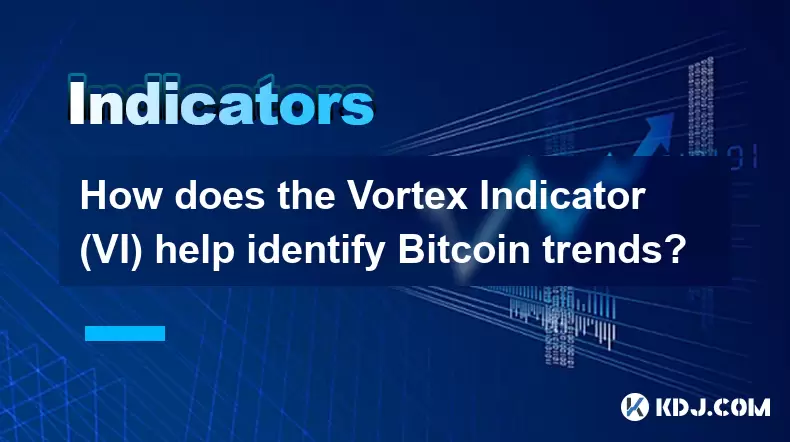
Understanding the Vortex Indicator (VI)
The Vortex Indicator (VI) is a technical analysis tool used to identify trend direction and anticipate potential reversals in financial markets, including cryptocurrency. It was developed by Etienne Botes and Douglas Siepman and introduced in 2010. The VI operates on the principle of comparing two oscillating values: +VI and -VI, which represent upward and downward trends respectively. For Bitcoin traders, this can be particularly useful due to the asset's high volatility and frequent trend shifts.
+VI measures the strength of uptrends by analyzing the relationship between current highs and previous lows.
-VI measures the strength of downtrends by analyzing the relationship between current lows and previous highs.
When +VI crosses above -VI, it may signal the beginning of an uptrend. Conversely, when -VI crosses above +VI, it could indicate the start of a downtrend. This binary crossover mechanism makes the Vortex Indicator especially effective for spotting Bitcoin trend reversals early.
How to Calculate the Vortex Indicator
To fully understand how the Vortex Indicator works with Bitcoin price data, one must first grasp its calculation methodology. The VI consists of two core components: +VI and -VI, both derived from True Range (TR) and directional movement values.
Here’s a breakdown of the steps:
- Calculate the current period’s True Range (TR), which is the greatest of the following:
- Current High minus Current Low
- Absolute value of Previous Close minus Current High
- Absolute value of Previous Close minus Current Low
- Compute **+VM (Upward Movement)** as the absolute difference between the current High and the prior Low.
- Compute **-VM (Downward Movement)** as the absolute difference between the prior High and the current Low.
- Smooth these values over a specified period (usually 14 periods).
- Divide the smoothed +VM by the smoothed TR to get **+VI**.
- Divide the smoothed -VM by the smoothed TR to get **-VI**.
This mathematical foundation ensures that the Vortex Indicator adapts well to Bitcoin’s rapid price fluctuations, offering traders a more nuanced view of momentum shifts than simple moving averages.
Using the Vortex Indicator to Identify Bitcoin Uptrends
For traders seeking to catch Bitcoin uptrends, the Vortex Indicator provides actionable signals through its +VI and -VI crossovers. When the +VI line rises above the -VI line, it indicates increasing bullish momentum. This is especially valuable during consolidation phases or after prolonged bearish moves.
Key considerations:
- Look for the **crossover at lower timeframes** (e.g., 1-hour or 4-hour charts) to confirm short-term uptrends.
- Use higher timeframes (e.g., daily or weekly) to validate long-term bullish setups.
- Combine the Vortex Indicator with volume indicators like OBV (On-Balance Volume) to confirm breakout strength.
- Watch for divergence patterns where price makes a new high but +VI fails to do so, suggesting weakening momentum.
These techniques help traders filter out false signals and focus on high-probability entries during emerging Bitcoin uptrends.
Detecting Bitcoin Downtrends Using the Vortex Indicator
Just as the Vortex Indicator excels at identifying uptrends, it also offers reliable signals for detecting downtrends in Bitcoin. A key signal occurs when the -VI line crosses above the +VI line, indicating stronger bearish pressure.
Important points to consider:
- Incorporate support and resistance levels to assess whether the downtrend has room to continue.
- Monitor candlestick patterns near key moving averages (like the 50-day or 200-day SMA) to enhance confirmation.
- Be cautious of false breakouts, especially during low liquidity periods or major news events.
- Use Fibonacci retracement levels to identify potential reversal zones within the downtrend.
By applying these strategies, traders can better manage risk and position themselves effectively during Bitcoin bearish phases.
Optimizing the Vortex Indicator for Bitcoin Trading Strategies
Given Bitcoin’s unique market behavior—characterized by extreme volatility and 24/7 trading—it's essential to fine-tune the Vortex Indicator settings for optimal performance. While the default setting is usually 14 periods, traders may adjust this depending on their strategy and timeframe.
Consider the following optimizations:
- For **scalping or intraday trading**, reduce the period to 7 or 10 to increase sensitivity to short-term price swings.
- For **swing trading**, keep the period at 14 or increase it to 21 for smoother trend identification.
- Overlay the Vortex Indicator with other tools such as RSI or MACD to avoid conflicting signals.
- Use multiple timeframes (e.g., analyze daily trend while trading on hourly charts) for confluence-based decisions.
These adjustments ensure that the Vortex Indicator remains responsive without generating excessive noise in the volatile Bitcoin market.
Frequently Asked Questions
Q: Can the Vortex Indicator be used alone for Bitcoin trading decisions?
While the Vortex Indicator is powerful, relying solely on it may lead to false signals, especially in choppy or sideways markets. Combining it with volume indicators or moving averages enhances accuracy.
Q: How does the Vortex Indicator compare to the MACD for Bitcoin trend analysis?
The Vortex Indicator focuses on trend initiation through price movement dynamics, whereas MACD emphasizes momentum through moving average convergence/divergence. Both are effective, but the VI is often more responsive to early trend changes.
Q: Is the Vortex Indicator suitable for all timeframes in Bitcoin trading?
Yes, but parameter adjustments are necessary. Shorter timeframes benefit from reduced periods (e.g., 7 or 10), while longer timeframes perform better with standard or extended periods (e.g., 14–21).
Q: Does the Vortex Indicator work well in highly volatile Bitcoin environments?
It performs well if properly configured. Volatility increases the frequency of crossovers, so traders should use filters like moving averages or chart patterns to improve signal quality.
Disclaimer:info@kdj.com
The information provided is not trading advice. kdj.com does not assume any responsibility for any investments made based on the information provided in this article. Cryptocurrencies are highly volatile and it is highly recommended that you invest with caution after thorough research!
If you believe that the content used on this website infringes your copyright, please contact us immediately (info@kdj.com) and we will delete it promptly.
- Cryptos in July 2025: Massive Gains or Just Hype?
- 2025-07-05 20:30:13
- Pepe's EVM Layer 2 Meme Coin Mania: What's the Hype?
- 2025-07-05 20:50:12
- Shiba Inu, Dogecoin, and the Crypto Skyrocket: What's Making These Memes Soar?
- 2025-07-05 21:10:12
- Tokenized Stocks: Robinhood, Gemini, and the NYSE Threat
- 2025-07-05 21:10:12
- Altcoin Adventures: Navigating the Pepe Fork Frenzy and Solana's Summer Swings
- 2025-07-05 21:15:12
- Hong Kong's Tokenised Bond Leap: Zero Stamp Duty Sparks Web3 Ambitions
- 2025-07-05 20:30:13
Related knowledge

How to set up a moving average crossover alert for Dogecoin
Jul 05,2025 at 07:33pm
Understanding Moving Averages and Their Relevance to DogecoinMoving averages (MAs) are among the most commonly used technical indicators in cryptocurrency trading. They help smooth out price data over a specific time period, offering traders a clearer view of trends. Dogecoin, being a highly volatile altcoin, often exhibits strong momentum when certain ...
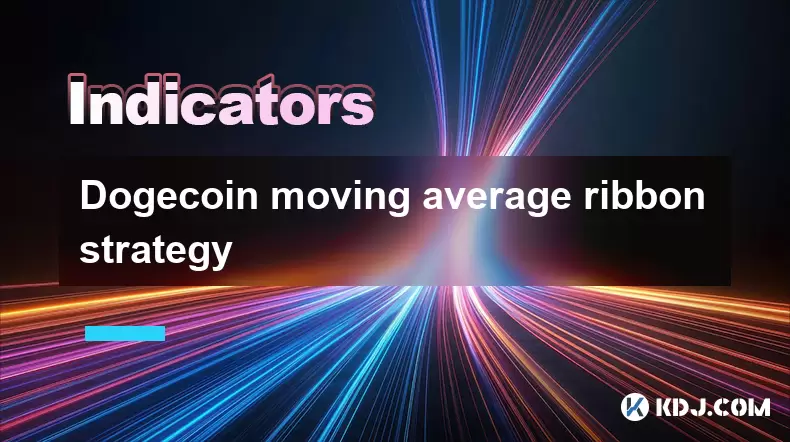
Dogecoin moving average ribbon strategy
Jul 05,2025 at 07:32pm
What is the Dogecoin Moving Average Ribbon Strategy?The Dogecoin moving average ribbon strategy is a technical analysis approach used by traders to identify potential trends and reversals in the price of DOGE. This method involves plotting multiple moving averages (MAs) on a price chart, typically of varying lengths, which visually form a 'ribbon' when ...
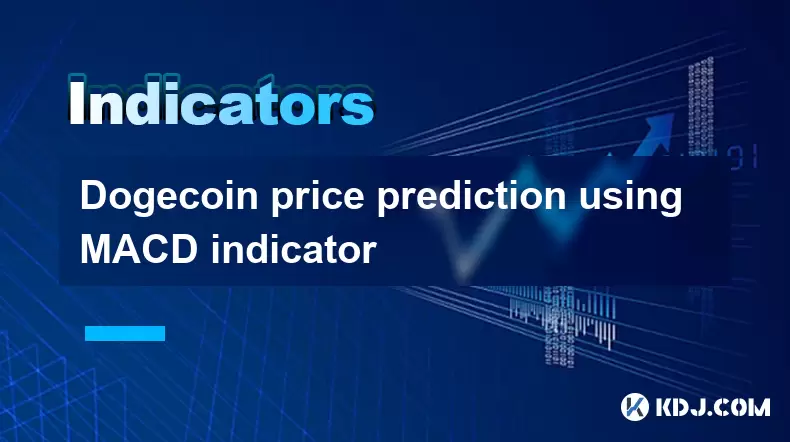
Dogecoin price prediction using MACD indicator
Jul 05,2025 at 07:18pm
Understanding the MACD Indicator in Cryptocurrency TradingThe Moving Average Convergence Divergence (MACD) is a popular technical analysis tool used by traders to identify potential price trends and reversals. It consists of three main components: the MACD line, the signal line, and the MACD histogram. The MACD line is calculated by subtracting the 26-p...
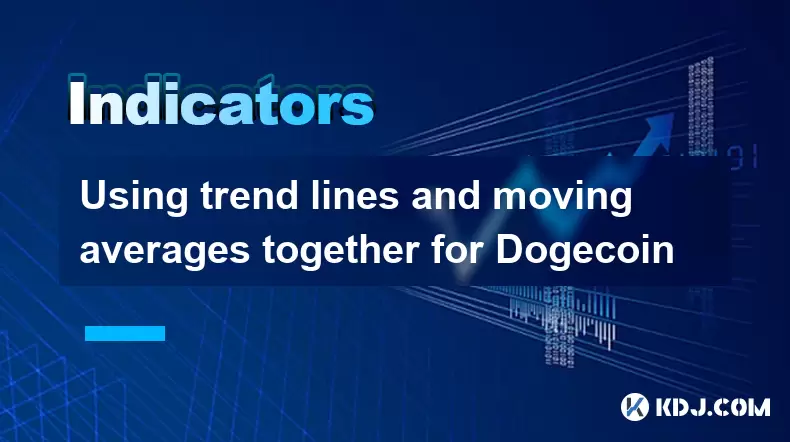
Using trend lines and moving averages together for Dogecoin
Jul 05,2025 at 07:16pm
Understanding Trend Lines in Cryptocurrency TradingTrend lines are essential tools for analyzing price movements in the cryptocurrency market. In Dogecoin trading, trend lines help identify potential support and resistance levels by connecting significant price points on a chart. When applied correctly, these lines can indicate whether the asset is in a...
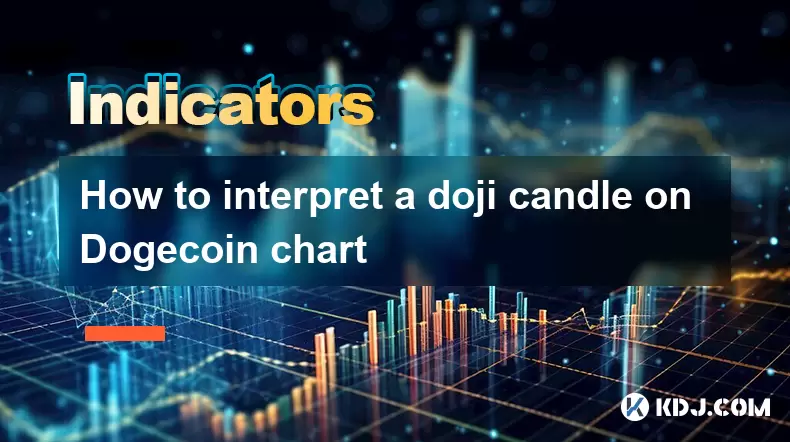
How to interpret a doji candle on Dogecoin chart
Jul 05,2025 at 07:49pm
Understanding the Doji Candlestick PatternA doji candle is a crucial technical indicator in cryptocurrency trading, especially when analyzing assets like Dogecoin. It represents market indecision and often signals potential reversals or continuation patterns. A doji forms when the opening and closing prices of an asset are nearly identical, resulting in...
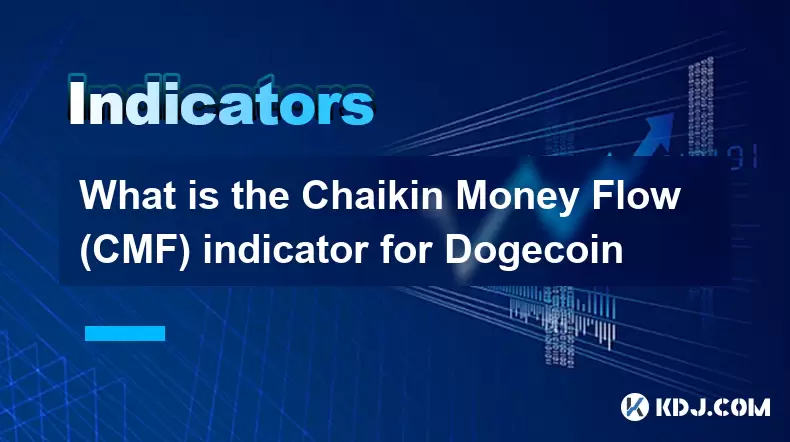
What is the Chaikin Money Flow (CMF) indicator for Dogecoin
Jul 05,2025 at 07:32pm
Understanding the Chaikin Money Flow (CMF) IndicatorThe Chaikin Money Flow (CMF) is a technical analysis indicator developed by Marc Chaikin to measure the accumulation and distribution of a financial asset over a specific period. It combines both price and volume data to assess whether institutional investors are actively buying or selling an asset. In...

How to set up a moving average crossover alert for Dogecoin
Jul 05,2025 at 07:33pm
Understanding Moving Averages and Their Relevance to DogecoinMoving averages (MAs) are among the most commonly used technical indicators in cryptocurrency trading. They help smooth out price data over a specific time period, offering traders a clearer view of trends. Dogecoin, being a highly volatile altcoin, often exhibits strong momentum when certain ...

Dogecoin moving average ribbon strategy
Jul 05,2025 at 07:32pm
What is the Dogecoin Moving Average Ribbon Strategy?The Dogecoin moving average ribbon strategy is a technical analysis approach used by traders to identify potential trends and reversals in the price of DOGE. This method involves plotting multiple moving averages (MAs) on a price chart, typically of varying lengths, which visually form a 'ribbon' when ...

Dogecoin price prediction using MACD indicator
Jul 05,2025 at 07:18pm
Understanding the MACD Indicator in Cryptocurrency TradingThe Moving Average Convergence Divergence (MACD) is a popular technical analysis tool used by traders to identify potential price trends and reversals. It consists of three main components: the MACD line, the signal line, and the MACD histogram. The MACD line is calculated by subtracting the 26-p...

Using trend lines and moving averages together for Dogecoin
Jul 05,2025 at 07:16pm
Understanding Trend Lines in Cryptocurrency TradingTrend lines are essential tools for analyzing price movements in the cryptocurrency market. In Dogecoin trading, trend lines help identify potential support and resistance levels by connecting significant price points on a chart. When applied correctly, these lines can indicate whether the asset is in a...

How to interpret a doji candle on Dogecoin chart
Jul 05,2025 at 07:49pm
Understanding the Doji Candlestick PatternA doji candle is a crucial technical indicator in cryptocurrency trading, especially when analyzing assets like Dogecoin. It represents market indecision and often signals potential reversals or continuation patterns. A doji forms when the opening and closing prices of an asset are nearly identical, resulting in...

What is the Chaikin Money Flow (CMF) indicator for Dogecoin
Jul 05,2025 at 07:32pm
Understanding the Chaikin Money Flow (CMF) IndicatorThe Chaikin Money Flow (CMF) is a technical analysis indicator developed by Marc Chaikin to measure the accumulation and distribution of a financial asset over a specific period. It combines both price and volume data to assess whether institutional investors are actively buying or selling an asset. In...
See all articles

























































































